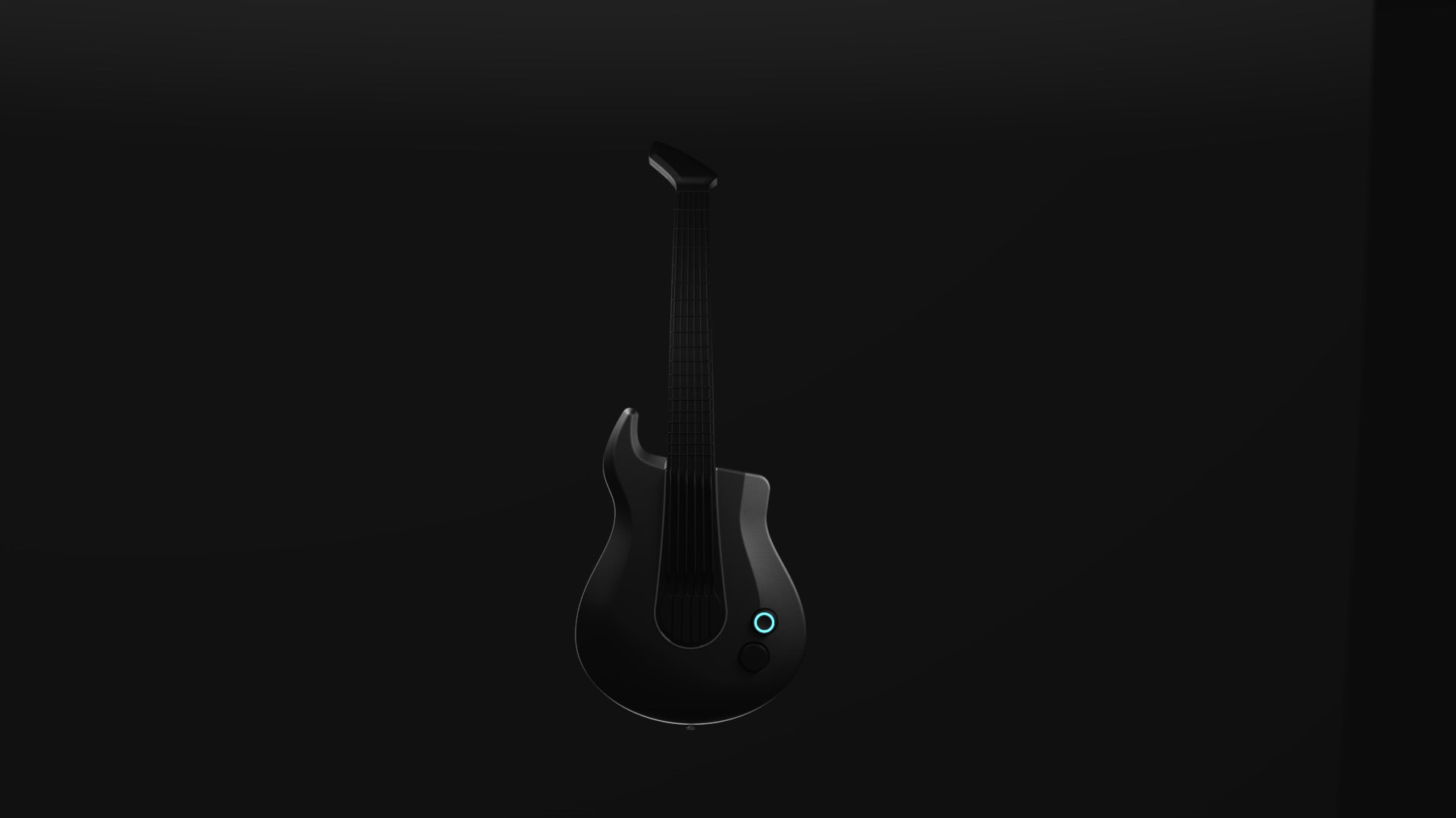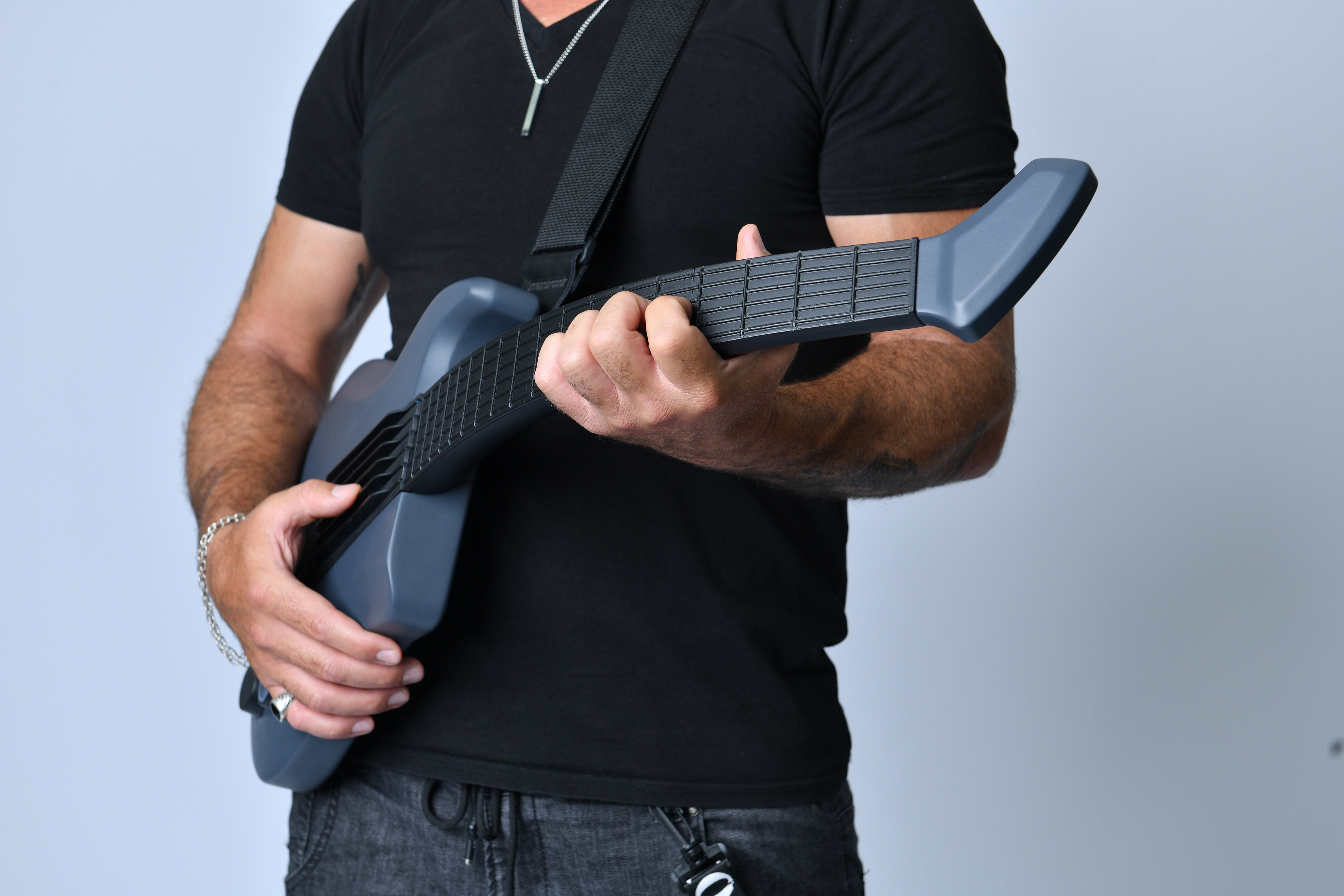Course Final Project | Mentors Galit Shavo | Year 2022
In my final project, I decided to redesign the conventional electric guitar. Through extensive research on guitar history, ergonomics, and innovation, I realized that one of the primary issues with guitars is that players often have to contort themselves to play, which can lead to improper use and eventual injury. By eliminating the strings, I removed a major obstacle that prevented the guitar from being more ergonomic. With the absence of strings, the Curvo guitar becomes a unique instrument with a flexible neck that can curve, warp, and twist to the player's unique range of motion; potentially reducing muscle fatigue and joint strain. Instead of relying on electromagnetics and acoustics, the Curvo guitar utilizes sensors to detect the notes being played.
These sensors, spanning the entire length of the guitar, capture various cues, such as the specific string being pressed and the intensity of the press. In the strumming area, velocity sensors register the force and strings being plucked. All this data is then translated into corresponding audio output. With multiple sensors embedded in the guitar, players can utilize the Curvo app to gain insights into their strengths and weaknesses. The app provides detailed analyses after tracking and recording the player's performance in real-time.
The process started by exploring different directions of playing positions to minimize repetitive/limiting motion during long playing sessions. One of the first concepts was introducing a rotating guitar neck allowing the player to change positions and playing styles.
During the process and many interviews with guitarists, it was important to keep 'non-negotiable' elements such as strumming and the familiar tactile feel of frets and strings.
After many sketches and mockups exploring different forms and reducing the guitar to its bare playable elements, it came to my attention that the concept of a curved guitar neck had never been done and was 'weird on unfamiliar' to guitarists. After this conclusion, I've decided to maintain a traditional aesthetic to the guitar body for an easier transition to this new concept.
Although Curvo may seem like a traditional guitar with a curved neck, it's embedded with pressure, velocity, and gyro sensors giving the guitarists opportunities they've never had before.
These sensors track and record the guitarists' playing habits and give them reports of various parameters and guidelines to improve their playing habits and positions.
The real-time feature of the app provides players with immediate feedback, allowing them to make necessary adjustments and improve their performance as needed. Another significant advantage of not having strings is that the Curvo app can control any sound - electric, acoustic, or special tuning with the push of a button.




